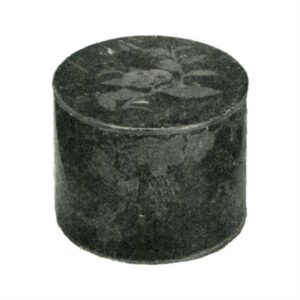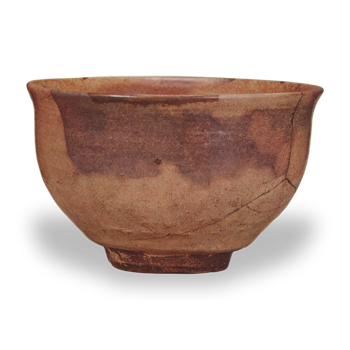



Famous item
Accessories: Curved black lacquered box, paulownia wood, inscription by Kobori Bichu-no-kami Munayoshi, same inscription on the underside of the lid
Provenance: Tamura Oki-no-kami – Kōnoike family
References: Wakan Meiki Hakurō (Exhibition of Japanese and Chinese Fine Art), Kōnoike Zōchō (Kōnoike Family Collection), Shokake Meiki Shū (Collection of Famous Artifacts from Various Families) by Kusama Waraku, Chaki Meibutsu Zui (Illustrated Catalogue of Famous Tea Utensils), Taisho Meiki Kan (Taisho Catalogue of Famous Artifacts)
Dimensions
Height: 8.3–9.0 cm Mouth diameter: 13.7–14.2 cm Foot diameter: 5.4 cm Height: 1.0 cm Weight: 463 g
The Kumagawa tea bowl is named after Kumagawa Bay, where it was brought from, not because it was made there. Their places of origin are widely distributed across the northern and southern regions of Korea, and it is believed that they were produced over a fairly long period. Among these, the tea bowls from Shin-Kumagawa and Hana-Zuri are said to have been made in the early period at Seonggyeong-do in North Korea, and are known as Seonggyeong-do-style. They can be considered the progenitor of Kumagawa tea bowls, and their form, clay quality, and glaze color all exhibit the dignified presence of a renowned tea bowl.
The Taishō Meiki Kan (Taishō Guide to Famous Artifacts) records, “This was fired during the Hongwu era, as mentioned in a Tang text titled ‘Manpō Fūrin-nin,’” regarding the Seikyō-dō style. If this source is reliable, it would serve as a key reference for determining the date. This tea bowl features a relaxed form with a persimmon-colored glaze, and the purple-tinged lacquer finish creates a mottled effect that adds to its charm. The cracks in the glaze, along with the tea stains that have seeped into the lacquer, have changed over the years. This was interpreted as resembling the “hagi flowers” mentioned in an old poem, leading to the creation of the name “Gono.”
Inside the lid: Inscription by Kobori Bichu no Kami Munayoshi
Exposed sleeves
Purple
Colored fields
Honeysuckle flowers



